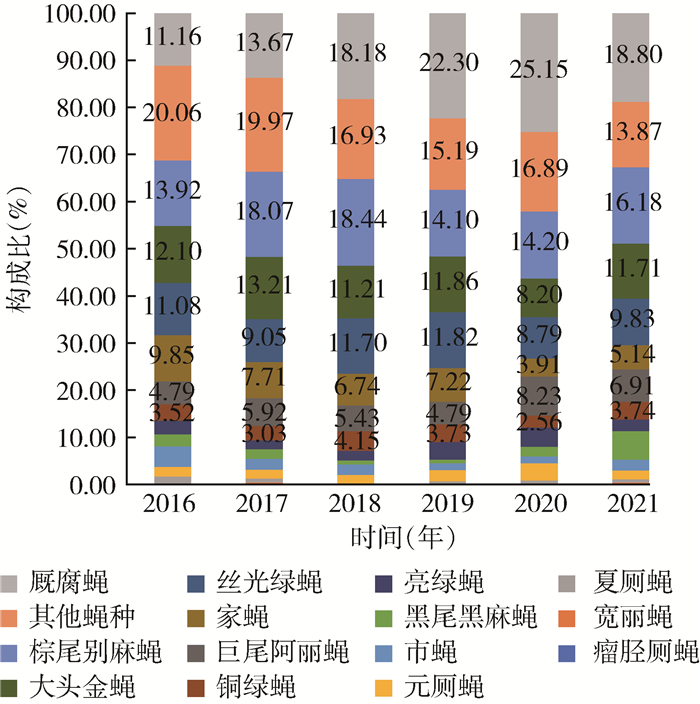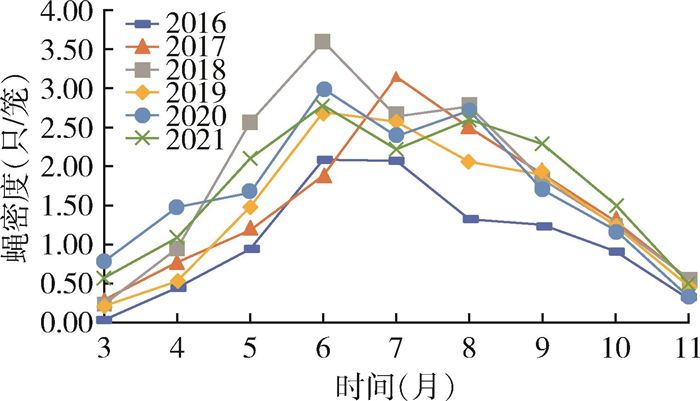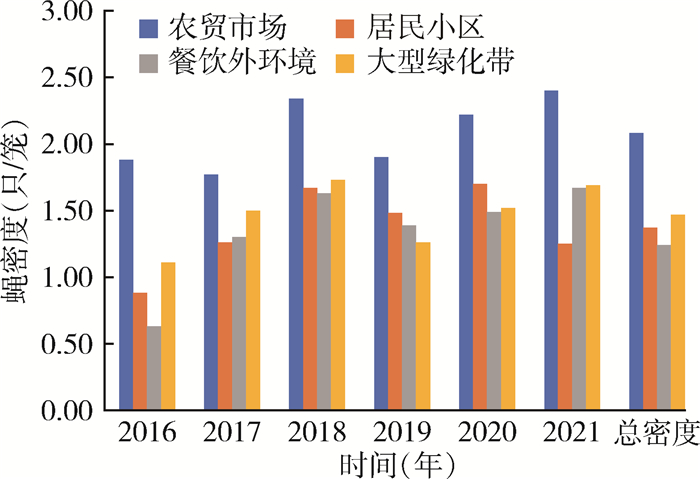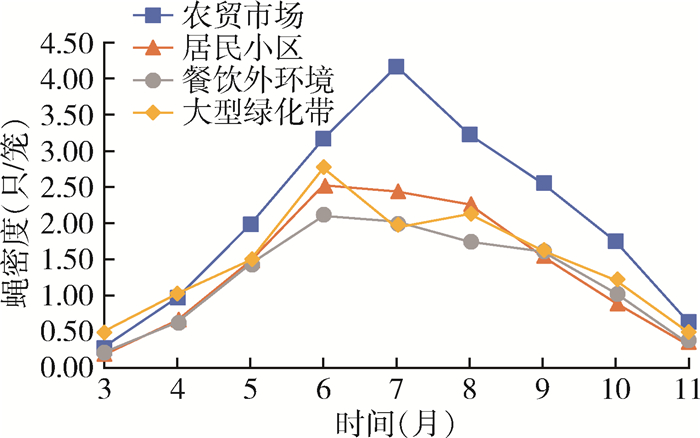| 1 |
王静静, 冷培恩. 角蝇及其防制[J]. 中国热带医学, 2022, 22 (6):529-534.
DOI
|
|
Wang JJ, Leng PE. Horn fly and its control[J]. China Trop Med, 2022, 22 (6):529-534.
DOI
|
| 2 |
冷培恩, 王明福, 莫建初, 等. 蝇类防制工作进展与发展展望[J]. 中国媒介生物学及控制杂志, 2015, 26 (3):217-222, 227.
DOI
|
|
Leng PE, Wang MF, Mo JC, et al. Progress and perspective of flies control[J]. Chin J Vector Biol Control, 2015, 26 (3):217-222, 227.
DOI
|
| 3 |
Wolfe MK, Dentz HN, Achando B, et al. Adapting and evaluating a rapid, low-cost method to enumerate flies in the household setting[J]. Am J Trop Med Hyg, 2017, 96 (2):449-456.
DOI
|
| 4 |
冷培恩, 蒋先进, 高强. 厩螫蝇及其防治[J]. 中华卫生杀虫药械, 2019, 25 (2):97-101.
DOI
|
|
Leng PE, Jiang XJ, Gao Q. Biology and control of stable fly[J]. Chin J Hyg Insect Equip, 2019, 25 (2):97-101.
DOI
|
| 5 |
上海市卫生和计划生育委员会. 上海市传染病监测方案(2016版)[Z]. 上海: 上海市卫生和计划生育委员会, 2016: 867-885.
|
|
Shanghai Municipal Health and Family Planning Commission. "Shanghai infectious disease surveillance program" (2016 edition)[Z]. Shanghai: Shanghai Municipal Health and Family Planning Commission, 2016: 867-885. (in Chinese)
|
| 6 |
冷培恩, 刘洪霞, 吴寰宇, 等. 上海市病媒生物控制30年回顾[J]. 上海预防医学, 2019, 31 (2):125-133.
DOI
|
|
Leng PE, Liu HX, Wu HY, et al. Thirty-year review of vector control in Shanghai[J]. Shanghai J Prev Med, 2019, 31 (2):125-133.
DOI
|
| 7 |
冷培恩, 徐劲秋, 朱江, 等. 两种方法监测蝇密度结果分析Ⅱ. 1992-1997年数据分析[J]. 中国媒介生物学及控制杂志, 1999, 10 (6):423-426.
DOI
|
|
Leng PE, Xu JQ, Zhu J, et al. Results analysis of two monitoring methods on the flies population density[J]. Chin J Vector Biol Control, 1999, 10 (6):423-426.
DOI
|
| 8 |
上海市人大常委会. 上海市生活垃圾管理条例[J]. 上海预防医学, 2019, 31 (8):669.
|
|
Shanghai Municipal People's Congress. Regulations of Shanghai municipality on the management of household garbage[J]. Shanghai J Prev Med, 2019, 31 (8):669.
|
| 9 |
戈斌, 朱伟, 张海兵, 等. 实施垃圾分类后上海市奉贤区居民区湿垃圾收集桶内蝇类孳生的影响因素[J]. 环境与职业医学, 2020, 37 (5):480-485.
DOI
|
|
Ge B, Zhu W, Zhang HB, et al. Risk factors of fly breeding in household food waste collection bins after waste sorting in Fengxian district, Shanghai[J]. J Environ Occup Med, 2020, 37 (5):480-485.
DOI
|
| 10 |
陈士强, 王泽清, 邱祥志, 等. 垃圾容器蝇类孳生及其化学防治的研究[J]. 中华卫生杀虫药械, 2013, 19 (1):51-52, 55.
DOI
|
|
Chen SQ, Wang ZQ, Qiu XZ, et al. Flies breeding and its chemical control in refuse container[J]. Chin J Hyg Insect Equip, 2013, 19 (1):51-52, 55.
DOI
|
| 11 |
陆宝麟, 吴厚永. 中国重要医学昆虫分类与鉴别[M]. 郑州: 河南科学技术出版社, 2003: 3-428.
|
|
Lu BL, Wu HY. Classification and identification of important medical insects of China[M]. Zhengzhou: Henan Science and Technology Press, 2003: 3-428.
|
| 12 |
王飞, 张富强, 颜传均, 等. 2006-2010年上海市虹口区蝇类监测结果分析[J]. 中国媒介生物学及控制杂志, 2011, 22 (5):480-483.
|
|
Wang F, Zhang FQ, Yan CJ, et al. Analysis of fly density monitoring results in Hongkou district from 2006 to 2010[J]. Chin J Vector Biol Control, 2011, 22 (5):480-483.
|
| 13 |
吴海霞, 鲁亮, 孟凤霞, 等. 2006-2015年我国蝇类监测报告[J]. 中国媒介生物学及控制杂志, 2018, 29 (1):5-10.
DOI
|
|
Wu HX, Lu L, Meng FX, et al. Reports on national surveillance of flies in China, 2006-2015[J]. Chin J Vector Biol Control, 2018, 29 (1):5-10.
DOI
|
| 14 |
王雪霜, 吴海霞, 岳玉娟, 等. 2018年全国蝇类监测报告[J]. 中国媒介生物学及控制杂志, 2019, 30 (2):139-141, 150.
DOI
|
|
Wang XS, Wu HX, Yue YJ, et al. National vectors surveillance report on flies in China, 2018[J]. Chin J Vector Biol Control, 2019, 30 (2):139-141, 150.
DOI
|










